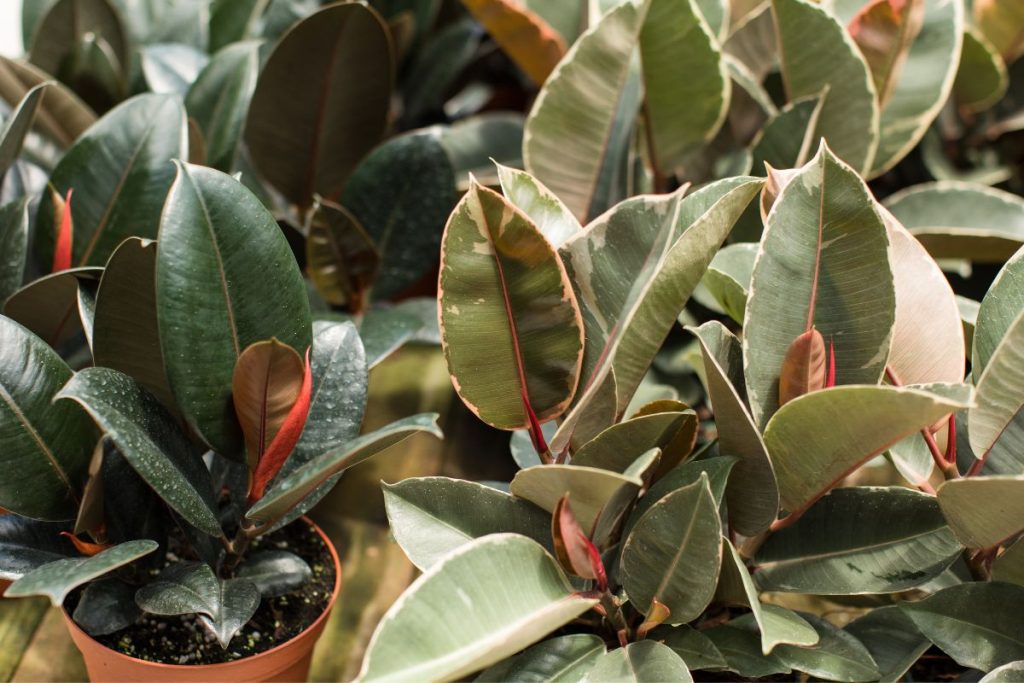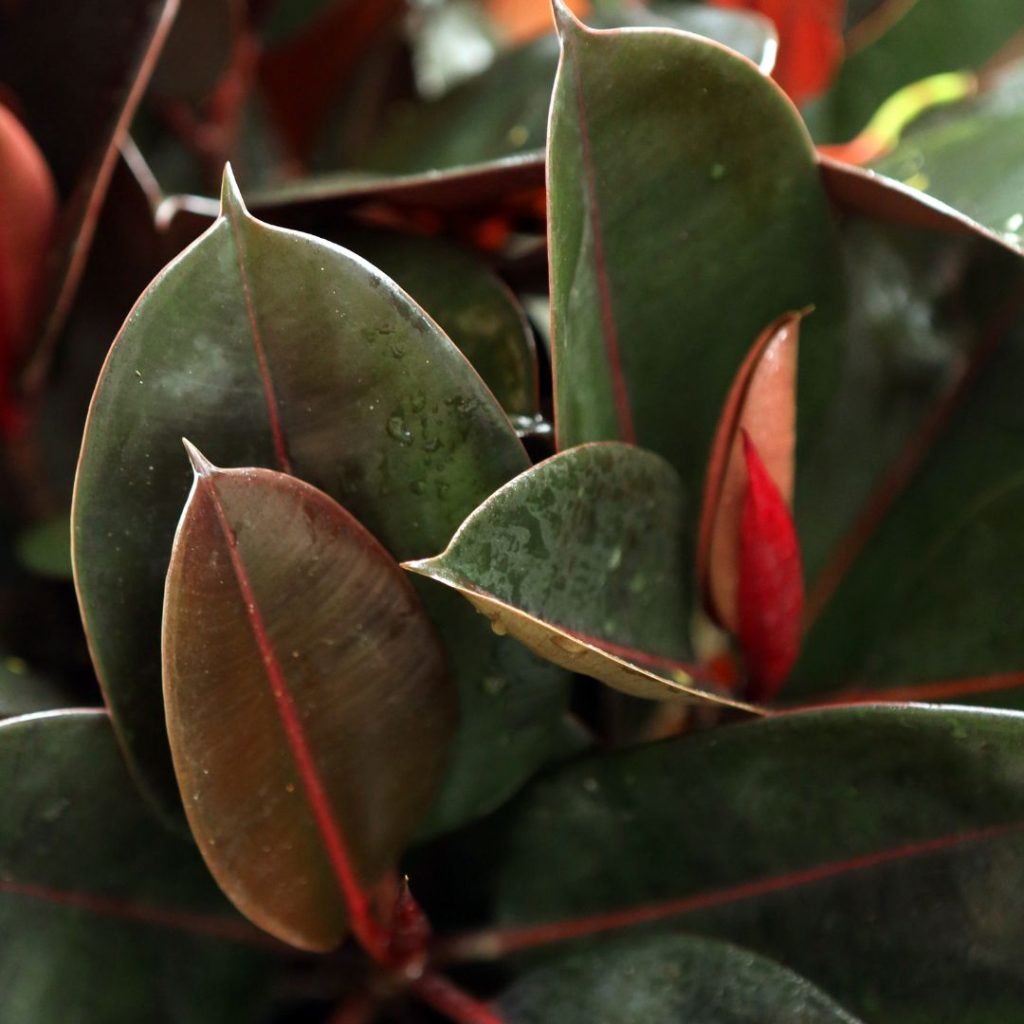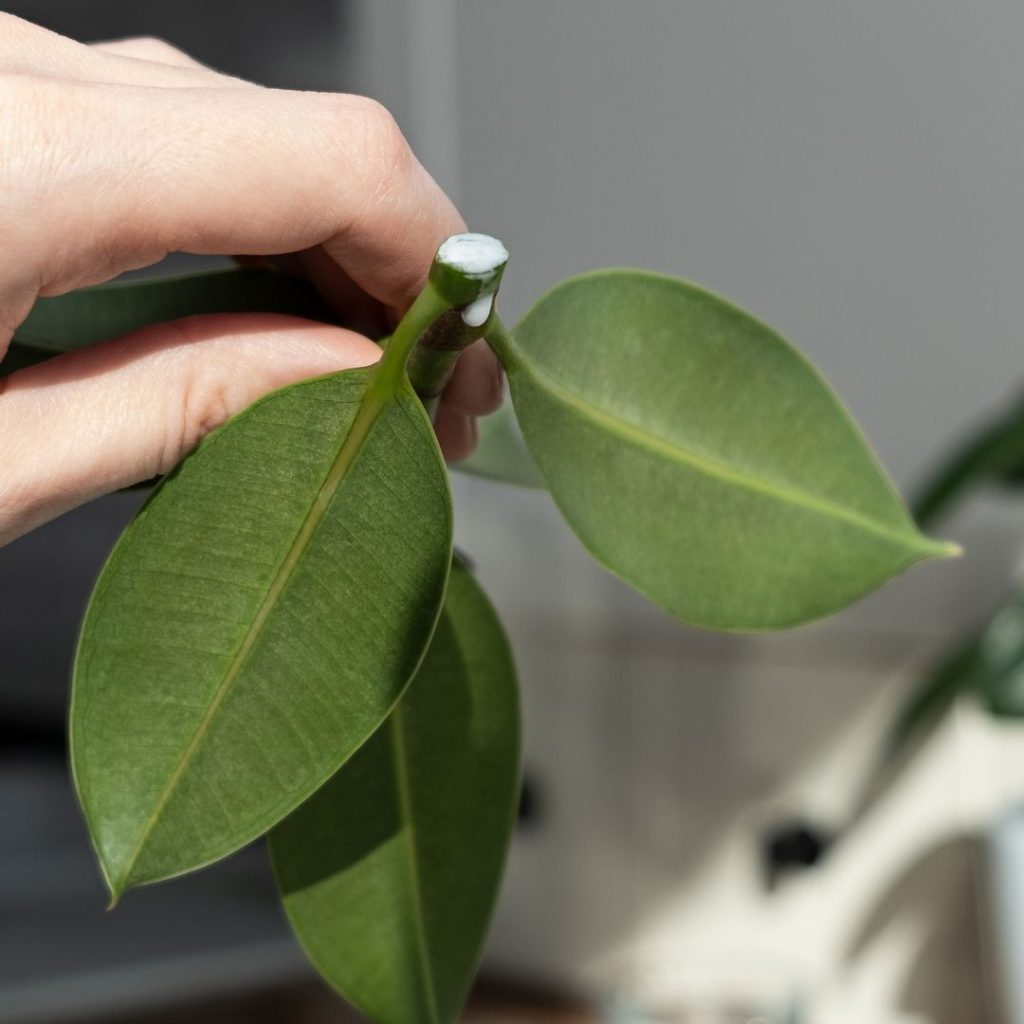You may remember your grandmother tending to her rubber plant in her home, but did you ever think that it could be harmful to you and your pets? Don’t worry, we’ve got you covered! In this article, we’ll explore whether rubber plants are toxic to humans and pets in order to provide peace of mind and safety to all. We’ll look at the potential risks rubber plants pose to humans, dogs, and cats so you can make an informed decision about having a rubber plant in your home.

Contents
Are Rubber Plants Toxic To Humans?
Your rubber plant’s milky sap may be of concern, but it’s not toxic to humans. According to experts, the risk is often overstated and can be managed with basic precautions. The latex in the sap is the primary cause for worry, but it is important to differentiate between irritation and toxicity. Although skin irritation can occur for those with latex sensitivities, the plant itself is not toxic. In fact, the Baby Rubber Plant is considered non-toxic for both humans and pets.
These plants are classified as Toxicity Class 4, meaning the sap can cause minor skin irritation but is not considered dangerous. It is important to take precautions, such as wearing gloves when handling the plant, to minimize the risk of skin irritation. Also, if any sap gets on the skin, it should be washed off immediately with soap and water.
It is also a good idea to keep the plant out of reach of young children and pets. Even though the rubber plant is not toxic, its milky sap can cause minor irritation if ingested. As such, it is best to keep the plant out of reach, especially if it is in a home with young children or pets.
Are Rubber Plants Toxic To Dogs?

However, while rubber plants are not toxic to humans, they can be toxic to pets, particularly dogs. Ingestion of a rubber tree plant can lead to relatively mild symptoms in dogs, such as skin dermatitis, oral irritation, drooling, vomiting, and depression. It is important to note that the exact species of rubber tree plant ingested will determine the symptoms and effects, as there are three different families of the plant kingdom. It is also important to seek medical advice from your veterinarian if your dog chews on or ingests a rubber tree plant.
Toxicity symptoms can vary greatly, depending on the species of the rubber tree plant. To ensure your dog’s safety, it is important to be aware of the various species of rubber tree plants and to keep them out of reach of your pet. Most rubber tree plant toxicity cases in dogs recover very well with supportive therapies, and the prognosis of a full recovery is good.
It is important to take quick action if you believe your dog has ingested a rubber tree plant. Symptoms of toxicity can worsen quickly and can be potentially fatal, so it is important to seek medical attention right away. Keeping your dog away from rubber plants is the best way to ensure their safety. If you notice your pet chewing on or ingesting a rubber tree plant, contact your veterinarian immediately to get the proper treatment.
Related Post:
17 Amazing Rubber Plant Benefits
Are Rubber Plants Toxic To Cats?

Cats’ safety should be a top priority if they come in contact with a rubber plant. Ingesting rubber plants can cause irritation to cats’ mouths and gastrointestinal tracts. Additionally, the sap can irritate their skin if it comes in contact. Fortunately, rubber plants are not as toxic as many other plants and fatalities are rare unless a large amount is ingested.
If your cat has ingested a rubber plant, contact your veterinarian immediately. Possible symptoms include decreased appetite, drooling, vomiting, diarrhea, and skin irritation. Your veterinarian will be able to provide advice on how to handle the situation.
It is important to be aware of the plants your cat has access to. Check your garden for any rubber plants, and be sure to keep them away from your cat. If you have a rubber plant indoors, make sure your cat cannot access it. If you are considering adding a rubber plant to your home, it is best to choose a pet-safe alternative.
In addition, watch for any signs of rubber plant toxicity in your cat. If you notice any of the symptoms, get help from your veterinarian right away. Early diagnosis and treatment can improve the chances of a successful recovery.
Rubber plants can be hazardous to cats. To keep your pet safe, be aware of which plants are present in your home, and take the necessary precautions if you have a rubber plant. Be sure to contact your veterinarian if your cat has ingested a rubber plant. With the right care, your cat can make a full recovery.
Conclusion
Rubber Plants may be aesthetically pleasing, but they can be dangerous to humans and pets alike. Fortunately, the risks are easy to avoid by keeping the plants out of reach of children and pets. The best way to enjoy the beauty of a rubber plant is to admire it from afar. With a few simple precautions, you and your family can stay safe and enjoy its beauty.
